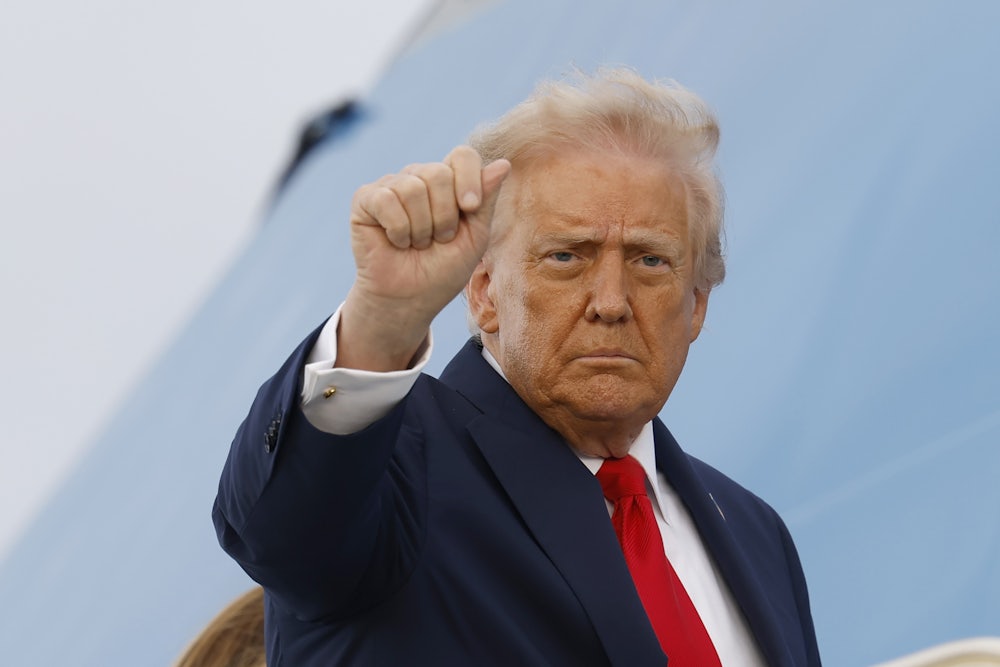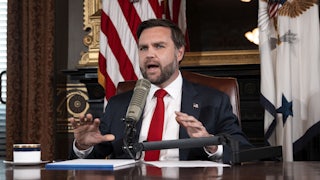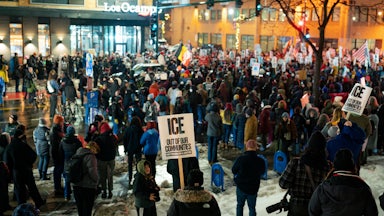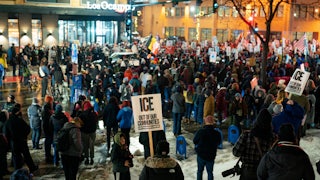A report on the prevalence of “militant, nationalistic, white supremacist violent extremism” in the United States has disappeared from the Justice Department website. The deletion, which was spotted by an extremism scholar, who shared an archived copy, was reported by 404 Media on Tuesday. Apparently published in 2024, the 13-page report was a fairly noncontroversial review of two decades of research on extremism, research that was funded by the National Institute of Justice (the research arm of the Department of Justice). “We don’t know why the study about far-right extremist violence was removed,” 404 Media noted, though it was apparently accessible on the DOJ website until September 12—two days after the killing of a prominent right-wing figure who had the ear of the White House: Charlie Kirk.
In light of past research on far-right violence, the report offered few surprises. “The number of far-right attacks continues to outpace all other types of terrorism and domestic violent extremism,” researchers found. Far-right attacks are both more numerous and more lethal: Since 1990, “far-right extremists” have claimed more than 520 lives, whereas over the same time period “far-left extremists” were responsible for 42 “ideologically motivated attacks,” killing 78. Among the issues the far right have used to justify their acts of violence, the report said, were “long-standing ideological grievances related to immigration,” as well as “narratives surrounding electoral fraud.”
It was no doubt inconvenient for the current administration for two of the claims Trump most often deploys to legitimize his hold on power—that immigrants are flooding into the country and voting illegally—were named by a DOJ-funded study as two of the more common narratives that far-right actors use to legitimize their violence. (When asked why this report was removed, a media affairs manager with the Department of Justice responded to The New Republic, “No comment, thanks.”)
But the Trump administration is not just flirting with far-right violence, not merely quietly removing studies that track its rise; it is creating political space in which it can flourish. Such violence, in Trump’s eyes, no longer seems like such a threat to the federal government because it is now more openly aligned with the government. On Fox last Friday, the president said, “I’ll tell you something that’s going to get me in trouble, but I couldn’t care less. The radicals on the right oftentimes are radical because they don’t want to see crime.... They’re saying, ‘We don’t want these people coming in.’” They share his concerns, in other words, and are thus justified in what they do. “The radicals on the left are the problem,” the president concluded. The threat political violence poses is measured by whatever Trump thinks is threatening to him.
To be clear, the right’s minimization and denial of such violence, even as it has unfolded, has precedent. Not long after President Obama’s first election, a Department of Homeland Security analyst noticed an escalation in terrorist threats made by the far right. The analyst, Daryl Johnson, had previously worked for Army Counterintelligence, monitoring domestic threats against the military, and at the Bureau of Alcohol, Tobacco and Firearms, where he investigated neo-Nazis, militias, and white supremacists. At DHS, he continued that work, authoring a report for law enforcement called “Rightwing Extremism: Current Economic and Political Climate Fueling Resurgence in Radicalization and Recruitment.”
The report was prescient: Within weeks of its release, on June 10, 2009, a white supremacist shot and killed a security guard at the Holocaust Memorial Museum in Washington, D.C., and on June 1, Dr. George Tiller was assassinated by an anti-abortion extremist and supporter of the Montana Freemen, a far-right anti-government group, who preached that the group was sovereign and not subject to the laws of the federal government. But in the meantime, the report had been repudiated by DHS.
Why? Because the right had made the report politically toxic. Conservative media outlets framed its findings as an attack on the right. “There is not one instance they can cite as evidence where any of these right-wing groups have done anything,” Rush Limbaugh complained at the time. “You have a report from Janet Napolitano and Barack Obama, Department of Homeland Security portraying standard, ordinary, everyday conservatives as posing a bigger threat to this country than Al Qaeda terrorists or genuine enemies of this country like Kim Jong Il.” It didn’t matter that there was ample evidence or that there would be more. Homeland Security Secretary Napolitano tried to dispel the wave of disinformation, saying in a statement, “We are on the lookout for criminal and terrorist activity, but we do not—nor will we ever—monitor ideology or political beliefs.” She apologized to veterans for the report. It didn’t matter. Within a year, not only had the report been retracted, Daryl Johnson said the team at DHS that had produced the report with him had been dismantled.
“I’ve thought about this a lot,” Johnson said in an interview, about a decade later. “What if our politicians and our police chiefs took my ’09 report seriously, and it wasn’t politicized, and people started implementing programs and devoting money and resources to this problem, where would we be 10 years removed from it now? I firmly believe that these groups would be on their heels.” Instead, he said, “I think we’ve reached the point of no return.… And now, it doesn’t matter whether Donald Trump is re-elected or whether a Democrat comes into power. The far right is going to be here.” That was in 2020.
It’s easy to paint the current administration’s attempts to suppress research meant to help us better understand and respond to political violence from the right, while also vastly overstating the threat of political violence from the left and threatening unlawful crackdowns, as projection or hypocrisy. But something else—something more dangerous—is driving the Trump’s administration’s moves to blame the left for all political violence.
Under Trump, we are watching an effort by those in power to redefine political violence in such a way that the right can never be culpable, in which the right is always the victim and the hero. When Trump erased the criminal convictions of around 1,500 people engaged in the attack on the Capitol on January 6, it was as if to say, any act committed by these “hostages” and “patriots” cannot be a crime because it was in support of him. Likewise, to dare punish such a patriot is itself “violence.” What we are at risk of right now is an administration that succeeds in persuading even more of these supporters that anything their political enemies do is violence—and that anything they do is just politics.






